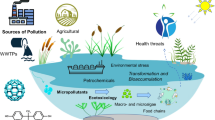Abstract
The marine demosponge Suberites domuncula is abundantly present on muddy sand bottoms, both in the open sea and in harbors. In the present study it is shown that exposure of S. domuncula to cadmium (CdCl2) in concentrations ranging from 0.01 to 5.0 g ml−1 for up to 5 d results in apoptotic fragmentation of DNA. Kinetics experiments revealed that after 24 h a significant increase of DNA fragmentation already occurred. Besides cadmium a second stimulus was identified to also cause apoptosis in this species, namely exposure to heat-treated Escherichia coli. In order to support the finding that both cadmium and E. coli induce apoptosis in the sponge, expression of the apoptotic gene MA-3 was studied. The cDNA, SDMA3, was isolated and found to be 2247 nucleotides long. The deduced amino acid sequence (Mr 50 765) shares high similarity with the corresponding mouse molecule. Like the mouse gene, the sponge MA-3 gene undergoes increased expression in response to apoptotic stimuli. While the specimens remained alive after treatment with cadmium, the sponges treated with E. coli died after approximately 12 d. The E. coli-treated animals started to form gemmules 10 to 12 d after addition of the bacteria. Hence, the process of apoptosis in sponges is triggered by two different pathways, one which is initiated by exogenous factors, e.g. heavy metals, and a second one, caused by endogenous factors, which leads to gemmule formation and a shift of the presumably immortal cells to mortal cells. The latter assumption is supported by the finding that during the process of bacteria-induced apoptosis, which results in the death of the specimens, the activity of the telomerase drops. It is concluded that the cells which appear to be immortal and telomerase-positive undergo apoptosis during the process of gemmule formation. In consequence cells not involved in the production of gemmules become mortal. Based on these data, it is proposed that apoptosis is a suitable biomarker in the bioindicator organism S. domuncula to monitor unfavorable environmental conditions, at least in this animal phylum.
Similar content being viewed by others
Author information
Authors and Affiliations
Additional information
Received: 10 November 1997 / Accepted: 6 March 1998
Rights and permissions
About this article
Cite this article
Wagner, C., Steffen, R., Koziol, C. et al. Apoptosis in marine sponges: a biomarker for environmental stress (cadmium and bacteria). Marine Biology 131, 411–421 (1998). https://doi.org/10.1007/s002270050334
Issue Date:
DOI: https://doi.org/10.1007/s002270050334




